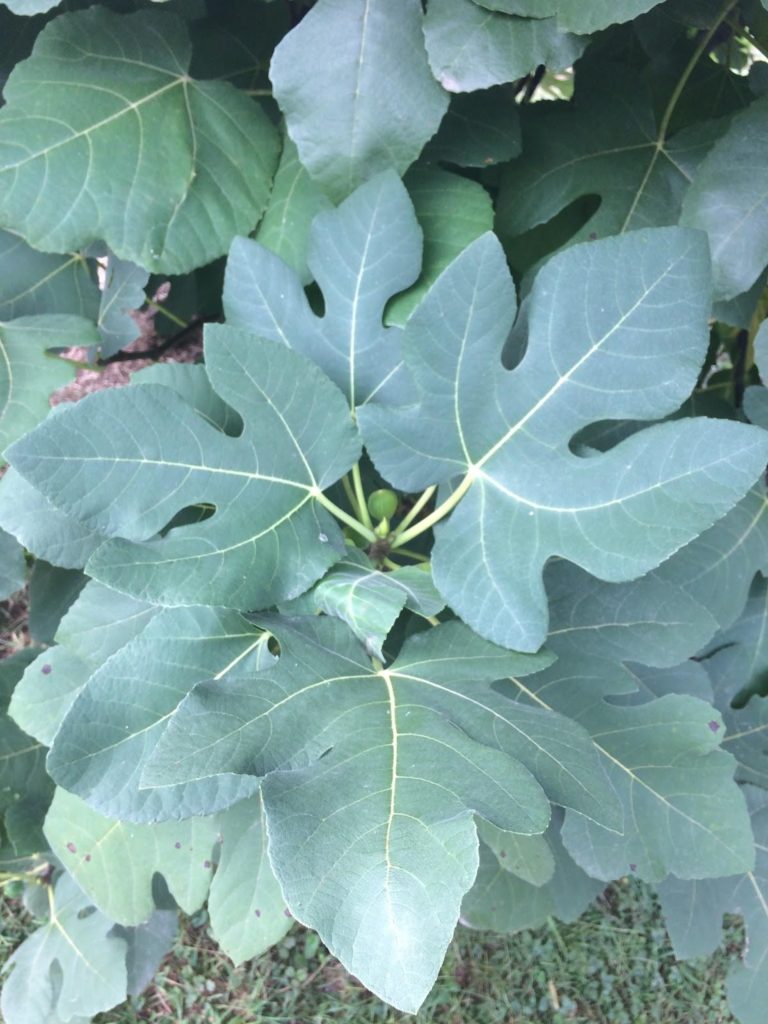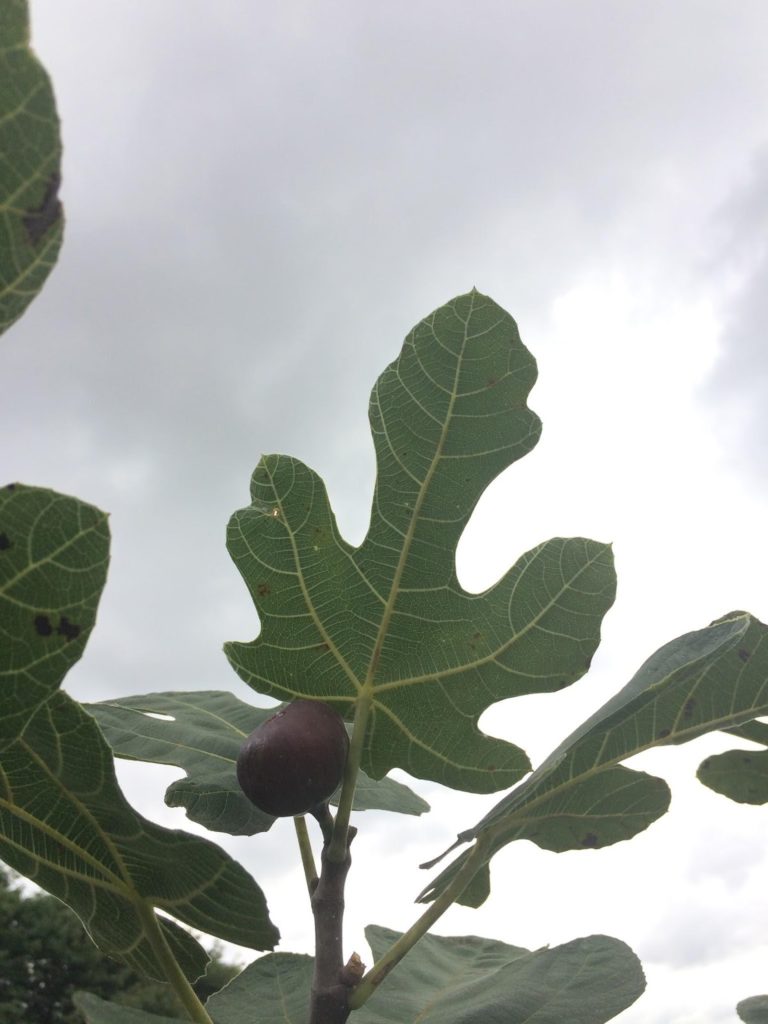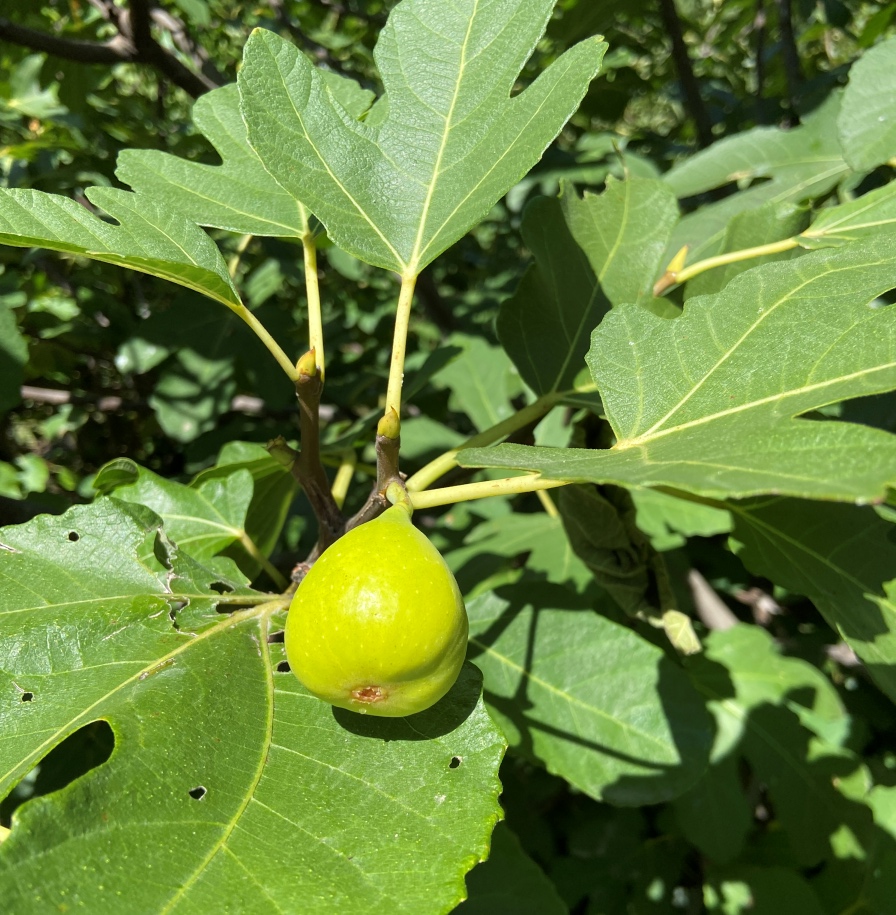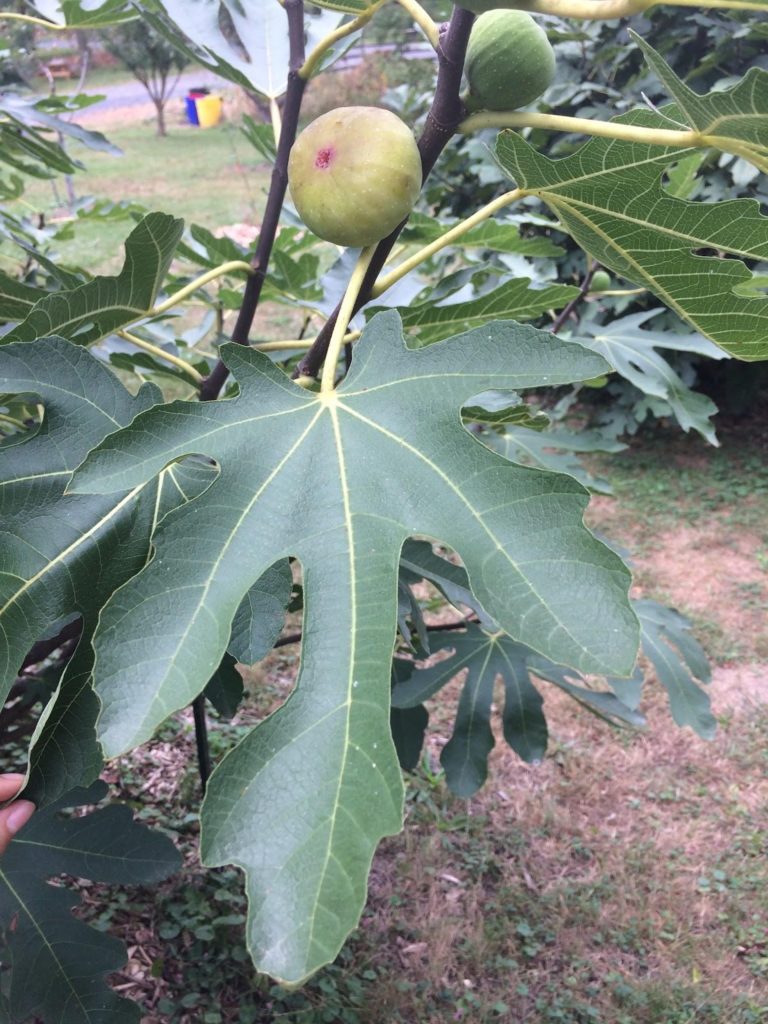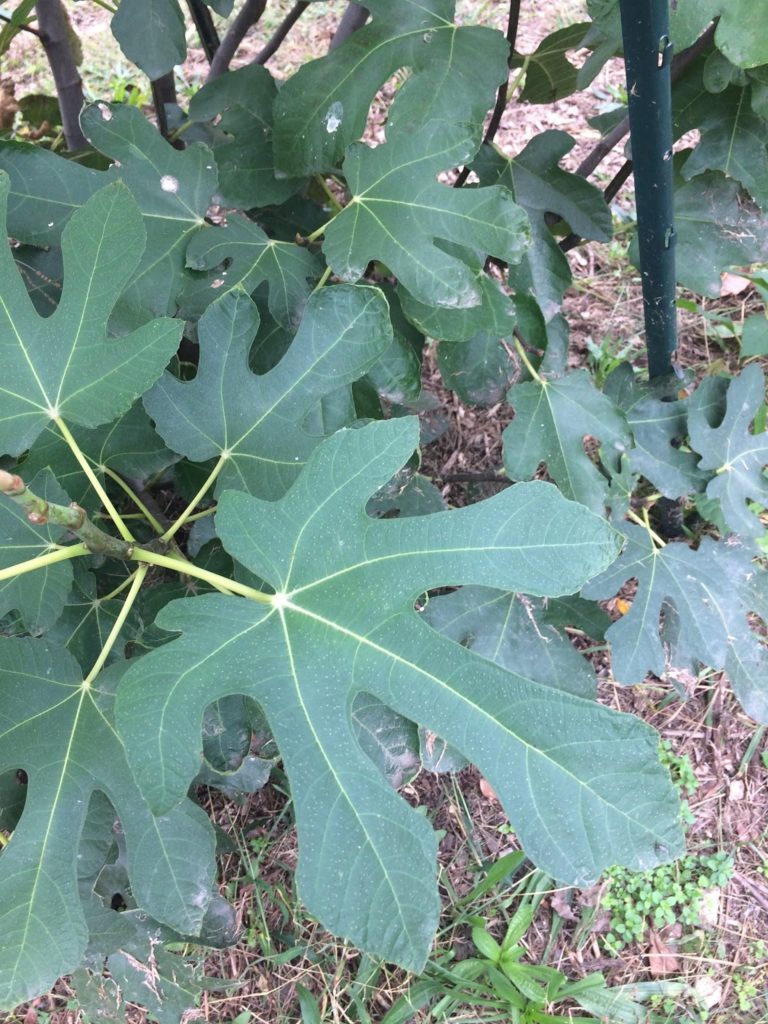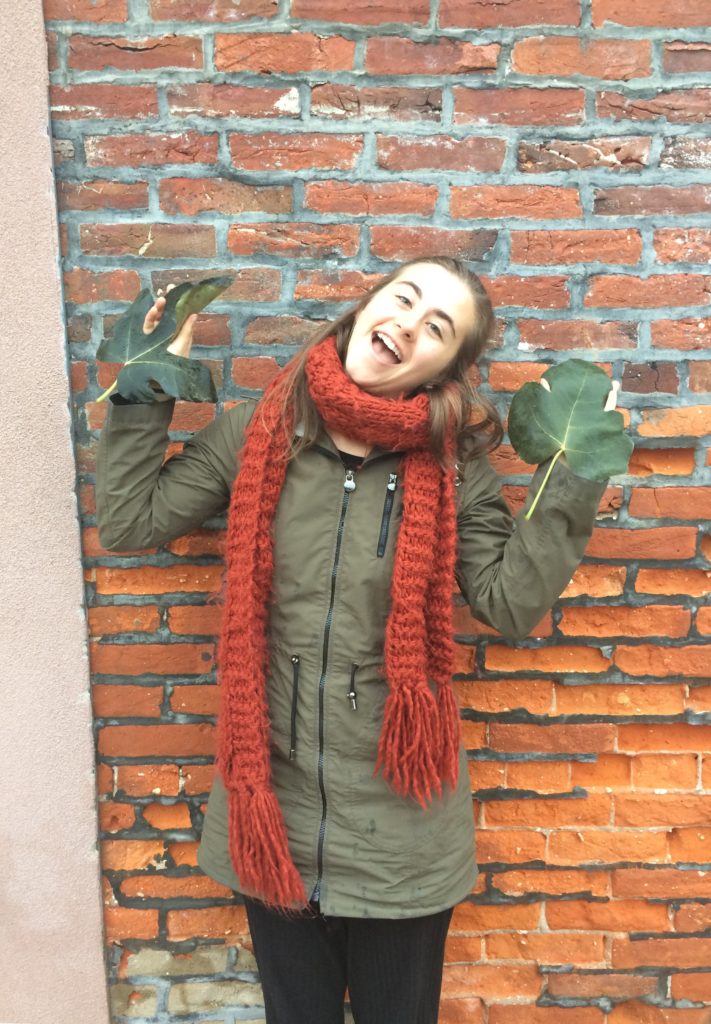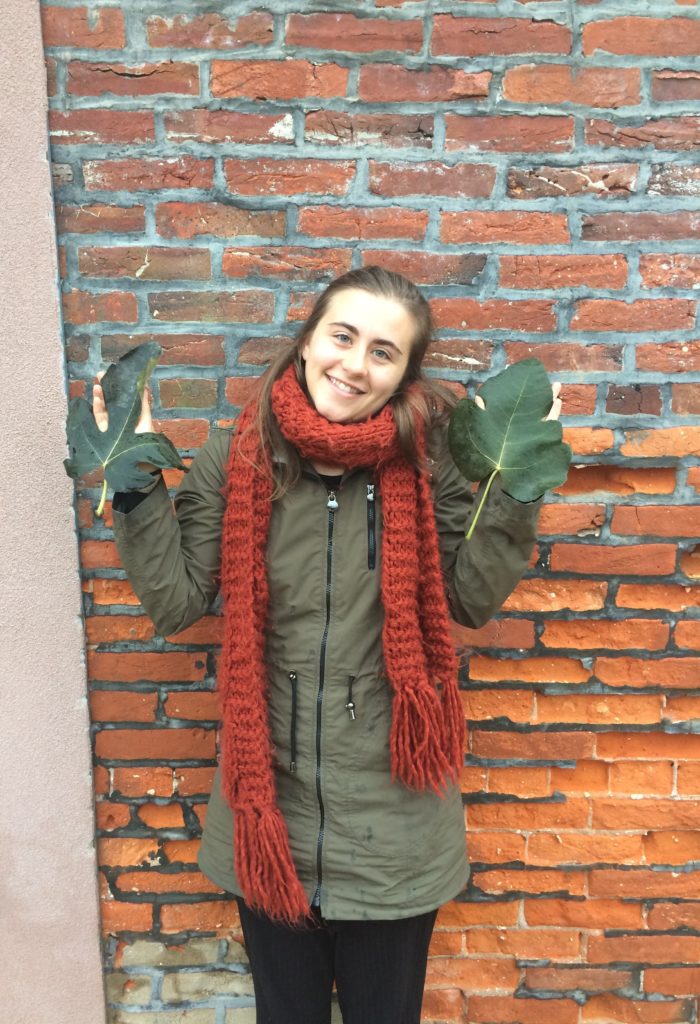POP FIG VARIETIES
We love our fig trees here at POP! There are several species of edible figs that are part of the Ficus genus and are native to temperate regions of Asia and Turkey, where they have been cultivated since at least 5000 B.C. Today, they are an important fruit in many parts of the world including the Mediterranean and the United States. The Common Fig (Ficus carica) is the most cold hardy species of edible fig and the one we plant in Philadelphia; unlike other fig species, it is alsoo self-fertile and doesn’t require pollination to produce fruit. Figs can be eaten fresh, dried, or even turned into a nice preserve. They are a good source of calcium, fiber, iron, copper, carbohydrates, potassium, and Vitamins A, E, and K. There are many varieties of fig trees featured throughout our different orchard partner sites, but here is a quick guide to our most popular varieties.
Celeste – a productive fruiter that produces medium-sized fruit with smooth, light brown to violet-colored skin and pastel pink flesh. This is a fairly cold-hardy variety and takes freezes better than other figs.
Historical Facts: This is one of the most popular figs in our POP orchards, commonly grown in the Southeastern United States but widely adaptable. It is quick to fruit and after a harsh winter, it is able to regrow from the roots and produce fruit in the same year!
Ripening and Harvest: Harvest from July-Late October when the fruit is soft and purplish-brown, perhaps with a little green, and bends at the neck.
Flavor: Sweet and juicy with a rich honey-like flavor. It’s known as the “Sugar Fig” for a reason!
Chicago Hardy – bears small to medium sized figs with a deep mahogany color and exhibits drought-tolerance once established. A very productive and cold hardy variety!
Historical Facts: Another one of our most popular figs featured in POP orchards, this variety originates from Sicily but was cultivated in Chicago. It is easy to grow and even does well in containers – perfect for the backyard fruit grower.
Specific Care Requirements: This is a cold-hardy variety and takes freezes better than other figs. It is also quick to fruit, allowing it to die back to the ground in a really harsh winter and then regrow from the roots and successfully bear fruit in the same year. A single established Chicago hardy fig can provide up to 100 lbs of fruit yearly!
Ripening and Harvest: Harvest from August-Late October when the fruit is soft and medium-dark purple. The fruit is small to medium in size and has a reddish interior flesh.
Flavor: Sweet and rich
Larchwood – A variety of unconfirmed origin that produces abundant medium to large tear-drop shaped figs that remain green when ripe, with a juicy red interior. Every year, this is voted the best tasting fig in POP orchards!
Historical Facts: POP Director Phil Forsyth propagated this variety from a yard on Larchwood Ave in West Philly – a local varietal! In harsher winters, it does require some protection to ensure a good harvest.
Ripening and Harvest: Harvest from August-early October when the fruit is soft and a lighter green in color.
Flavor: One of the best tasting fig varieties we’ve come across, juicy and sweet.
Bartram’s Fig – A historic variety with attractive, deeply lobed leaves and producing large round figs that are yellow with a bit of purple when ripe.
Historical Facts: This variety is featured at Bartram’s Garden in Southwest Philadelphia. While the origins of this variety are unknown, it has been cultivated on site for many decades!
Ripening and Harvest: Harvest from August-Late October when the fruit is soft and light purplish-pink at base with green toward the stem. The fruit is medium to large in size.
Flavor: Sweet and tasty
Brooklyn White – also known as Naples White, this variety produces large, light lime-green skinned figs with light pink flesh and the flavor of honeyed strawberries. An unusual trait: the fruit can still ripen on the tree after dying back to the ground after a harsh winter!
Historical Facts: Brooklyn has a high concentration of fig trees because of its long history of Italian immigrants bringing cuttings from the beginning of the 20th century until World War II.
Ripening Period: Harvest from August- Early October when the fruit is soft and yellow-golden. The fruit is medium to large with a light pinkish-purple interior flesh. Crop from this tree ripens three weeks after the main crops begin on earliest cultivars.
Flavor: Light with notes of honey and strawberry
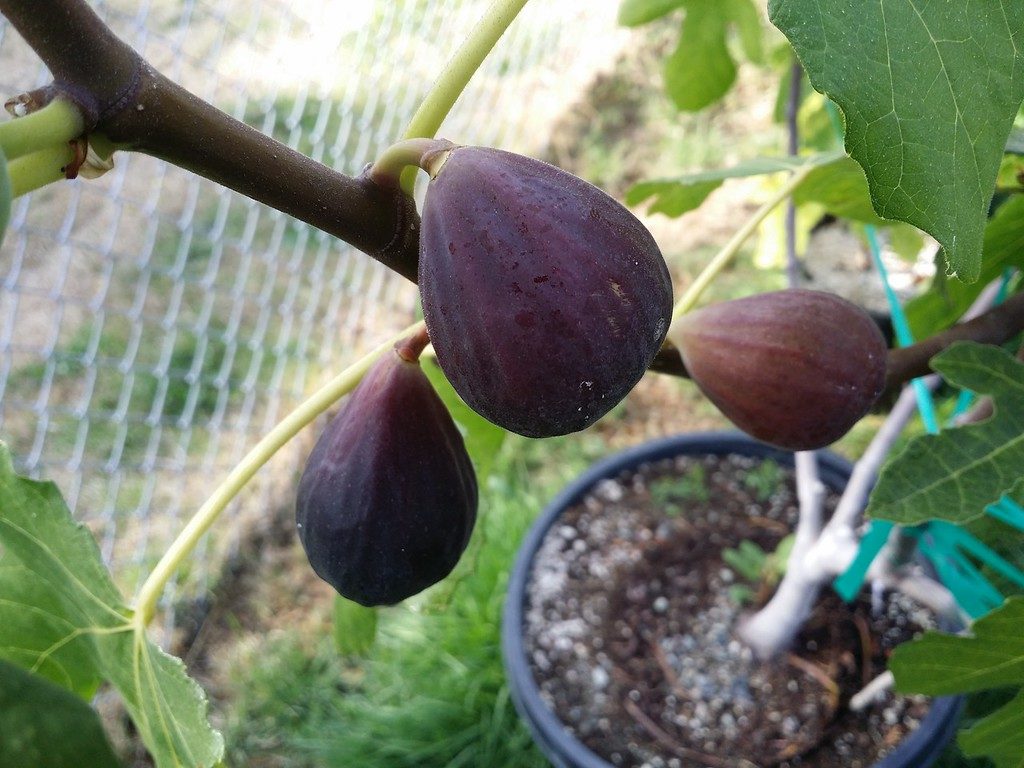
Takoma Violet – This new–to-be featured fig variety is known for its cold-hardiness and deep rich flavor and draws its origins from sanctuary city Takoma Park, MD. The fruit has a nice tight eye that is resistant to splitting and the plant itself is one of the most cold hardy varieites.
Historical Facts: This variety was newly planted at POP partner sites Tilden Middle School and St Bernard Community Garden in Spring 2017.
Ripening Period: Harvest from August-October when the fruit is soft and dark blackish-purple. The fruit is small with a reddish interior flesh.
Flavor: Rich and berry-like
My name is Megan Brookens and I am the new Repair the World Fellow partnered with POP for the year! I’m working with our Education Director, Alyssa Schimmel, to develop lesson plans and activities to use at our school orchard sites. This season, I am excited to learn with and from the students at our orchards about topics they want to explore.
One of the first things I learned at POP is how much we love our fig trees. These lovely plants, of the Ficus carica species, are highly recommended for Philadelphia due to their bountiful harvest and low maintenance requirements, aside from some seasonal winterizing. There are many fig varieties featured throughout our different orchard partner sites and we thought it would be fun to highlight some of the most common ones, see descriptions below and linked here as a downloadable PDF.
Stay tuned for more info on fig propagation and check out some previous POP blog posts linked below for more background and information on caring for your fig trees:
Unwrapping Figs & Pomegranates – and Winter Dieback;
A Volunteer Spotlight on Jeanette DiMeo, Fig propagator and donor
Sources
https://www.permaculture.co.uk/articles/all-you-need-know-about-figs-ficus-carica
https://www.nutrition-and-you.com/fig-fruit.html
http://www.waldeneffect.org/blog/Chicago_hardy_fig/
http://www.nytimes.com/2012/08/29/dining/in-brooklyn-an-abundance-of-fig-trees.html
http://seattlegardenfruit.blogspot.com/2015/09/fig-of-week-10-takoma-violet.html
This POP Plant Feature was written by POP 2017/18 Repair The World Fellow Megan Brookens.
SUPPORT US! If you found this entry useful, informative, or inspiring, please consider a donation of any size to help POP in planting and supporting community orchards in Philadelphia: phillyorchards. org/donate.
